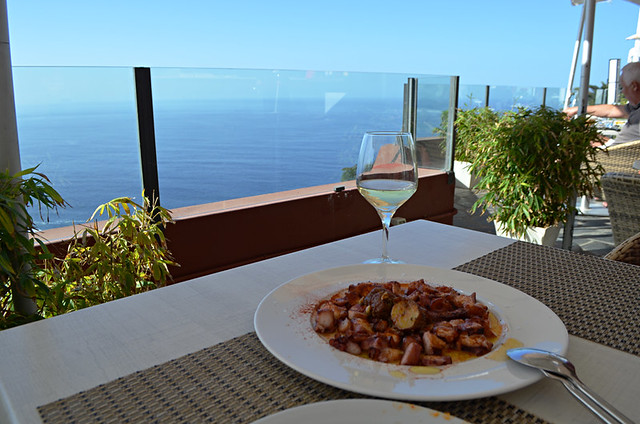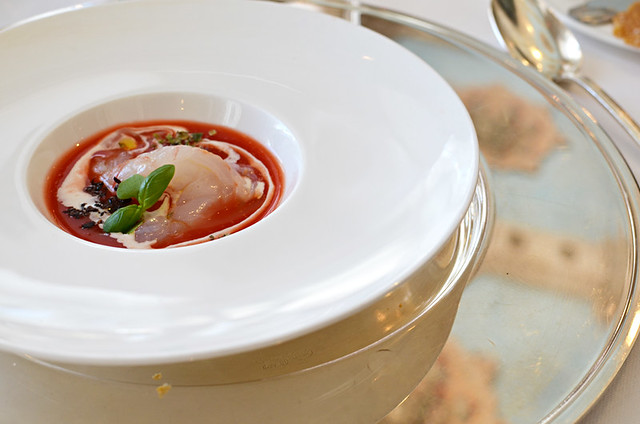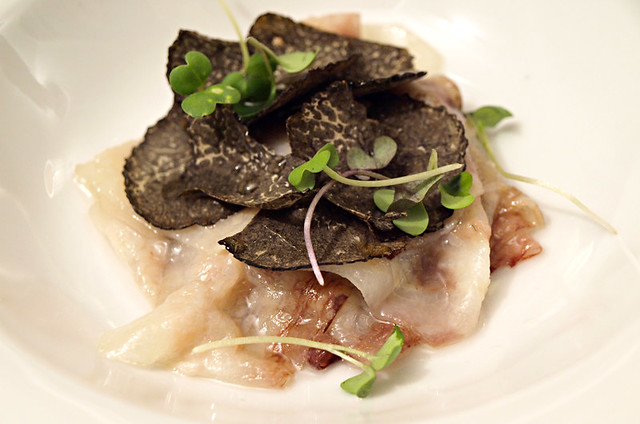Someone I talked to recently recommended a restaurant they said had a Michelin star. When I checked it out it wasn’t a Michelin star restaurant at all, but it was recommended in the Michelin Guide.
There is a world of difference between a restaurant having Michelin stars and a restaurant being included in the Michelin Guide.

Everyone knows a Michelin recommendation is a sign of quality and almost a guarantee of good food (‘almost’ because what people consider good food is objective). It’s not uncommon for people to describe a particularly good meal as being of Michelin star standard. We’re guilty of doing it and I see it all the time in Tripadvisor reviews. Maybe restaurants are, maybe they aren’t. However, I’ve been in plenty of restaurants I’ve seen described as Michelin star standard where the food, although good, has definitely not been Michelin star level. We’ve eaten in a number of Michelin star restaurants and although what has arrived on our plates has varied wildly, the ingredients of the experience have been consistent with the official criteria used to select restaurants worthy of a star.

Michelin star criteria
There are five key areas which are judged: quality of ingredients, mastery of flavour and cooking techniques, the personality of the chef in the cuisine, value for money, and consistency.
Depending on how inspectors score these areas, restaurants are awarded 0 to 3 Michelin stars. If a restaurant has one or more Michelin stars there will be a star or stars beside its entry in the Michelin Guide.

The personality of the chef is a particularly interesting measure. What it really translates as is creativity. Which is why when someone talks about a traditional restaurant serving excellently prepared dishes which are no different in construction than dishes in other restaurants, it’s never going to be Michelin star standard.
What each star means is interesting as well. One star tells you it’s a very good restaurant (a definition which is a wee bit ambiguous). Two stars means excellent cuisine and worth a detour for, and three stars equates to exceptional cuisine and worth a special journey to eat there.

We once made a 300km round trip to dine at a restaurant, El Rincon de Juan Carlos on Tenerife, which didn’t have a Michelin star. The chef had just been awarded runner up in a best young chef in Spain competition. The sensational food we were treated to made it more than worth the journey. Unsurprisingly, he’s now got his Michelin star.
Michelin guide criteria
The Michelin Guide includes many restaurants which don’t have stars, but do have other Michelin symbols acting as a culinary guide.

Crossed fork and spoon: There are five sets of these and they range from 1 set equating to a comfortable restaurant to 5 sets meaning luxury in the traditional style.
The Michelin Man’s hungry face: The Bib Gourmand award. Bib is short for Bibendum, the Michelin Man’s name. If Bib is licking his licks it means you’ve got a restaurant which serves good food at reasonable prices. These are set. In Europe the amount is €36 for a three course meal.

In 2016 another indicative symbol was added to the guide, a plate with a knife and fork beside it. ‘The Plate’ informs you that a restaurant serves dishes which are capably prepared and consist of fresh ingredients. Basically, you’ll have a good meal in these establishments.
Mix and match one of the food symbols with the comfort fork and spoon and you have a good idea of what to expect from a dining experience… but only in 24 countries around the world as Michelin don’t cover everywhere.
Jack is co-editor, writer and photographer for BuzzTrips and the Real Tenerife series of travel websites as well as a contributor to online travel sites and travel magazines. Follow Jack on Google+




Be the first to comment